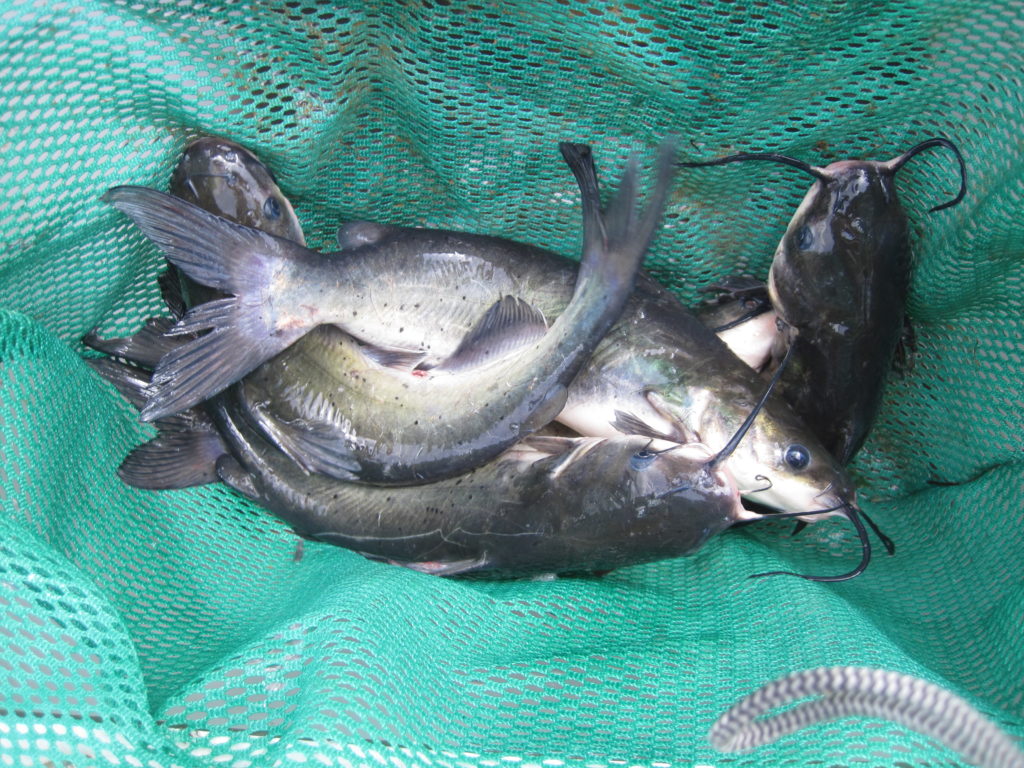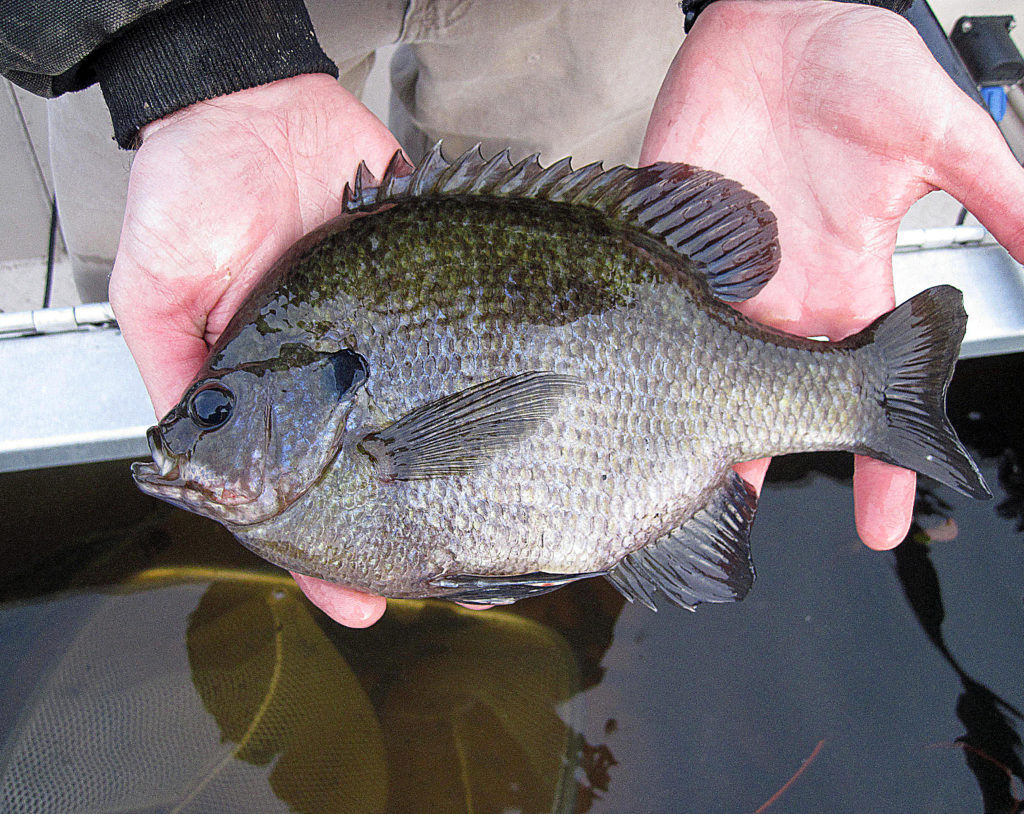

Effective Fish Stocking: The Right Species Makes All the Difference
Whether you are trying to improve your community’s recreational fishing activities or build a trophy fishery, different predator and prey species will play into the development of your fishery management plan. Not all fish species are suited to all kinds of ponds, and based on annual water temperature highs and lows you can determine which species will best suit your pond. Whether warm water fish, cool water fish, cold-water fish, or a combination, having the proper fish species is fundamental.
Many ponds often require the assistance of aeration, vegetation treatment, grass carp, and additional forage fish and harvesting predators, along with many other management practices. There are dozens of variables that can be modified to bring stability to the ecosystem, including fish cover, aquatic vegetation, and water quality. It is essential to assess and bring these features into balance before a fishery can reach its full potential.
Remember that the fish species present in your pond tie directly into the much larger picture of the “Food Web.” The Food Web includes the “Food Chain” along with all the aquatic and environmental variables that influence aquatic life such as vegetation, water quality, runoff, sunlight, etc. To maintain a prosperous aquatic environment, the food chain needs to be in check, and the food web needs to be understood.

Channel Catfish
Channel catfish are common, warm water pond predators.
There are a variety of predators, occupying many different habitats, available to pond owners depending on water temperature. Warm water ponds can support many of the common game fish stocked in private waters throughout North America, including largemouth bass, bluegill, crappie, channel catfish, bullheads, and hybrid striped bass. Those who have large, deep lakes or ponds with moderate to heavy spring flow may choose to stock cool water game fish, such as walleye, yellow perch, smallmouth bass, and tiger muskellunge, in addition to traditional warm-water species. Cold water or cold spring-fed ponds are best at supporting trout species such as rainbow and brook. Trout survival through the summer months is often the greatest challenge, due to their inability to tolerate warmer temperatures.

Bluegill
Bluegill are the backbone of the food chain in warm and cool water ponds throughout the country.
Once you have established which predator species are desired, focus on the forage base. Choosing the right forage (feed) species depends on water temperature, cover, water movement, predator species, and the base of the food chain, along with other management techniques. Good forage fish grow well in ponds, feed low on the food chain, do not compete with young predators for food, are a small size as an adult, and reproduce prolifically and frequently. Southern warm water ponds with high amounts of nutrients can stock threadfin shad and blue tilapia. A major advantage of threadfin shad and tilapia is that they spawn frequently throughout the summer and then become easy prey in the fall as water temperatures drop and they become sluggish.
Bluegill have a protracted spawning period which provides food nearly year-round for the larger fish. The redear sunfish, or shellcracker, is often stocked in combination with bluegill. Although it reproduces less prolifically than the bluegill, it eats snails and does not directly compete with them while aiding in reducing the incidence of snail-borne fish parasites. Other options include stocking golden shiners or fathead minnows as forage, though in such ponds they will likely disappear after several years due to predation. Trout ponds often do not require forage fish and can be stocked in ponds alone in low numbers, where they will feed upon aquatic insects and other small pond crustaceans. If larger trout or larger densities are desired, golden shiners can be stocked to provide an additional boost to trout growth rates. Higher densities of trout can be supported by artificial shoreline fish feeders.

Golden Shiners
Golden shiners can be stocked to provide an additional boost to trout growth rates.
With proper fish species selection, you can minimize the upcoming efforts needed to keep the fishery balanced. When it comes time to implement the desired species, let the forage base establish prior to introducing the predators whenever possible. Your patience will be rewarded with faster growth rates on the predator fish.
Happy Fishing!
Explore Our Fisheries Management Program
Please Let Us Know How We Can Help:
SOLitude Lake Management is a nationwide environmental firm committed to providing sustainable solutions that improve water quality, enhance beauty, preserve natural resources and reduce our environmental footprint. SOLitude’s team of aquatic resource management professionals specializes in the development and execution of customized lake, pond, wetland, and fisheries management programs that include water quality testing and restoration, nutrient remediation, algae, and aquatic weed control, installation and maintenance of fountains and aeration systems, bathymetry, shoreline erosion restoration, mechanical harvesting and hydro-raking, lake vegetation studies, biological assessments, habitat evaluations, and invasive species management. Services and educational resources are available to clients nationwide, including homeowners associations, multi-family and apartment communities, golf courses, commercial developments, ranches, private landowners, reservoirs, recreational and public lakes, municipalities, drinking water authorities, parks, and state and federal agencies. SOLitude Lake Management is a proud member of the Rentokil Steritech family of companies in North America.









